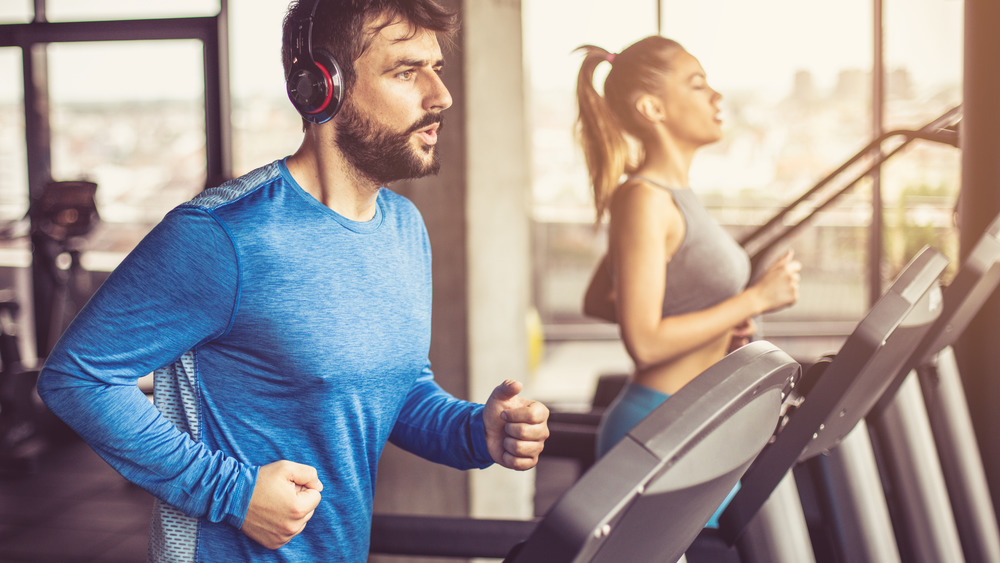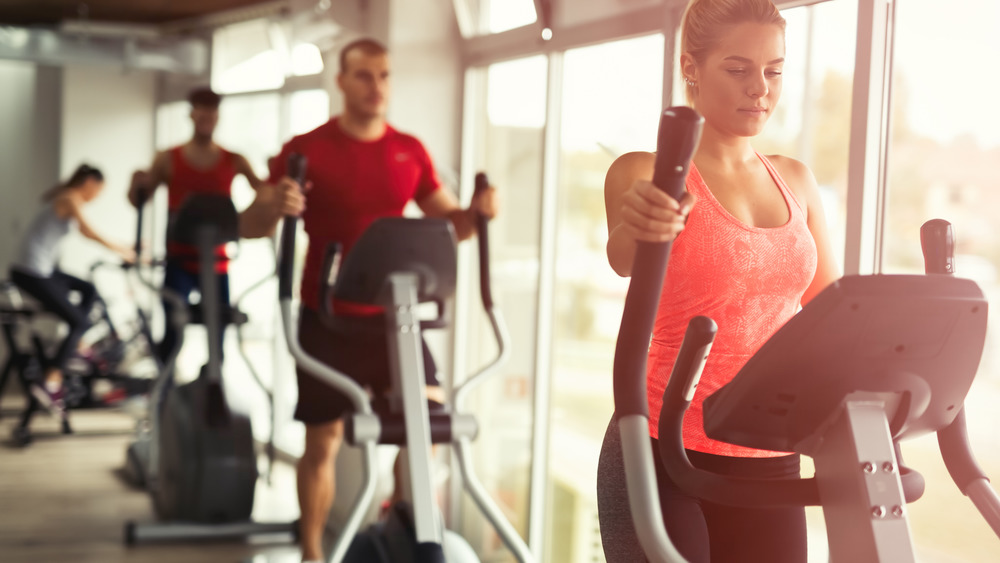The Real Difference Between Using The Treadmill And The Elliptical
Welcome to the aerobic workout machine face-off! In this corner, we have a treadmill with varying speeds and inclines. Over here, check out this elliptical machine with a selection of resistance for its swinging pedals and handlebars. Seriously, other than manufacturers' features (and the amount of floor space they take up), what's the real difference between using the treadmill and the elliptical?
Anyone can get an effective aerobic workout from either machine, the Mayo Clinic says. But your fitness goals — and of course your personal preferences — will determine whether one machine is better for you than the other.
A treadmill is good for fitness walking or running, especially if you don't enjoy exercising outdoors or the climate (hot or cold) tends to discourage you from putting on your sneakers. It's also a better tool to prepare for the endurance of running events such as a 5K or other road race.
If you're new to working out on a treadmill, the coaches at the YouTube channel and website The Run Experience suggest warming up with a walk/run approach: walk for one minute, then jog for one minute, repeating about 10 times (more or less depending on how you feel). Start out with a slight incline of about 10 to 15 percent, playing with the incline levels for short periods of time as you feel comfortable; remember, a road or trail naturally goes uphill and downhill.
Use good posture on either machine to avoid strain and injury
An elliptical machine also can be less stressful on your knees, hips, and back, so it's the machine of choice for people with arthritis or joint pain. Runners also like the cross-training benefits of an elliptical machine because pedaling in reverse enables them to work their hamstring and calf muscles.
Regardless, it's important to have good posture on either machine. On an elliptical machine, let the handles swing using your natural range of motion — don't grip them tight — and don't lean forward on the machine (via Livestrong). Instead, focus your weight on the lower half of your body, keeping your legs slightly bent and your back straight. Be mindful of putting your weight on your heels, rolling the pedals in a heel-toe motion as if you're walking. That way, you won't feel a numbness or tingling in your toes.
For proper form on a treadmill, check that your toes are facing straight ahead. Turning your feet in or out slightly will strain your knees (via The Run Experience). Also be sure to engage your glutes, keeping your pelvis upright, your hip bones forward, and your head and chest upright as well. Swing your arms gently front to back, not over your midline, which can cause abdominal and lower back issues, the trainers at The Run Experience say.


